HYDRAZINE
- CAS NO.:302-01-2
- Empirical Formula: H4N2
- Molecular Weight: 32.05
- MDL number: MFCD00011417
- EINECS: 206-114-9
- SAFETY DATA SHEET (SDS)
- Update Date: 2025-12-10 11:56:18

What is HYDRAZINE?
Description
Hydrazine sulphate, hydrobromide and hydrochloride have been reported to be occupational sensitizers, mainly in soldering flux.
Description
Hydrazine is an extremely toxic and unstable liquid with an ammonia-like odor. It has a wide explosive range (1.8–100%) and a low flash point of 52 °C. Its chief commercial use is as a blowing agent for plastics and metals; it also has many uses in synthesis and analytical procedures. Hydrazine has also been used as a rocket fuel, in part because it is hypergolic with?N2O4, last week’s molecule. Recently, M. Stradiotto and R. J. Lundgren reported the use of a?palladium catalyst?to couple hydrazine with aryl groups.
Description
Hydrazine is a highly toxic liquid with numerous applications in organic chemistry. It has a pungent ammonia-like odor and is highly flammable. It can be purchased in anhydrous form or as the hydrate. Hydrazine is classified as a strong reducing agent and will react readily and exothermically with most oxidizing agents and mineral acids.
Chemical properties
colourless oily liquid
Chemical properties
HYDRAZINE, colorless, fuming liquid, decomposes when heated above 350 °C at atmospheric pressure into N2 and NH2, also decomposes in presence of a catalyst (e.g., platinum) into N2 and NH3. Hydrazine burns when ignited in air with a violet-colored flame. The compound is soluble in all proportions with H2O and is soluble in alcohol. Hydrazine forms a hydrate with one molecule of H2O. Upon moderate heating or in a vacuum, the hydrate yields hydrazine and H2O. Hydrazine is a base slightly weaker than NH4OH.
Physical properties
Colorless, mobile, fuming liquid; ammoniacal odor; density 1.0045 g/mL at25°C; refractive index 1.46044 at 22°C; solidifies at 2°C to a white crystallinesolid; boils at 113.5°C; flash point 52°C; burns with a violet flame; vapor pres-sure 14.4 torr at 25°C; critical temperature 379.85°C; critical pressure 145atm; surface tension 66.67 dyne/cm at 25°C; dielectric constant 51.7 at 25°C;viscosity 0.876 centipoise at 25°C; very soluble in water; forms an azeotropewith water at molar composition of 58.5% hydrazine: 41.5% water (71.48%:28.52% by weight), the azeotrope with water boils at 120.5°C; forms hydrazinehydrate at 1:1 molar concentration in water; soluble in alcohols and other polar solvents; pKa 8.1 at 25°C.
History
Hydrazine was isolated first as a sulfate salt by Curtius in 1887. Earlier, in1875, Fischer prepared and identified the organic derivatives of hydrazine.Raschig in 1906 prepared hydrazine by hypochlorite oxidation of ammonia.
Hydrazine and its derivatives have numerous commercial applications. Itwas used initially as rocket propellant. During World War II, it was used as afuel for rocket-powered fighter planes. However, the most important applications of hydrazine and its derivatives at present are: as blowing agents; forinsect control; in pharmaceuticals; in water treatment; and in fuel cells.Hydrazine derivatives release nitrogen on decomposition, producing foamingaction in polymers to form pores or cells. A large number of hydrazine derivatives are used in agricultural applications as fungicides, herbicides, and pesticides for weed and pest control. A few hydrazide drugs, such as isoniazid [54-85-3] are used extensively for treating tuberculosis. Other applications ofhydrazine include its use in fuel cells; and in wastewater treatment forremoval of iron; iron removal from hot-water heating systems; reduction ofred iron oxide rust into magnetite; and for removal of oxygen to protectagainst corrosion. It also is used in electrolytic plating of metals on glassesand as a reducing agent. Several hydrazine derivatives are used in azo dyes;as coupling agents in color photography; and in explosives and ammunitionprimers.
The Uses of HYDRAZINE
Hydrazine is used as a high-energy rocket fuel, as a reducing agent, and for preparing organic hydrazine derivatives. The propellant grade of commercial hydrazine is more than 97.7% active. It is also used as an oxygen scavenger in boiler water. Hydrazine has also been used as an experimental drug for treating tuberculosis and sickle cell anemia.
The Uses of HYDRAZINE

A mixture of the SM (19.3 g, 75 mmoles) and hydrazine hydrate (18.8 g, 376 mmoles) was heated to 80 C. To the resulting suspension was added KOH (3.37 g, 51 mmoles) and the mixture was stirred at 80 C. Three additional portions of KOH (each 3.37 g, 51 mmoles) were added at 20 min intervals and the temp was raised to 110 C. After stirring overnight, the reaction mixture was acidified with cold portions of conc aq HCl. The product was extracted using MTBE (2 x 100 mL). The combined organics were washed with H2O (2 x 50 mL), brine (25 mL), and concentrated in vacuo until solids began to crystallize out of solution. The solids were filtered to provide the product. [US20080293730, page 8]
The Uses of HYDRAZINE
Reducing agent for many transition metals and some nonmetals (arsenic, selenium, tellurium), as well as uranium and plutonium; corrosion inhibitor in boiler feedwater and reactor cooling water; waste water treatment; electrolytic plating of metals on glas
The Uses of HYDRAZINE
Hydrazine is a highly reactive base and powerful reducing agent. It acts as an oxygen scavenger and is highly reactive with other chemicals. Hydrazine has a number of uses including, as a chemical precursor to blowing agents (e.g., azodicarbonamide and azobisisobutyronitrile), in the organic synthesis of pharmaceuticals and pesticides (e.g., isoniazid, fluconazole, and 3-amino-1,2,4-triazole), as a missile and rocket propellant (e.g., used in the F-16 fighter), as a gas-forming agent in air bags (e.g., sodium nitrite), as a corrosion inhibitor and reducing agent in large industrial boilers, and as a fuel source in fuel cells.
Definition
A colorless liquid that can be prepared by the oxidation of ammonia with sodium chlorate(I) or by the gas phase reaction of ammonia with chlorine. Hydrazine is a weak base, forming salts (e.g. N2H4.HCl) with strong acids. It is a powerful reducing agent, reducing salts of the noble metals to the metal. Anhydrous hydrazine ignites spontaneously in oxygen and reacts violently with oxidizing agents. The aqueous solution, hydrazine hydrate, has been used as a fuel for jet engines and for rockets.
Definition
hydrazine: A colourless liquid orwhite crystalline solid,N2H4; r.d. 1.01(liquid); m.p. 1.4°C; b.p. 113.5°C. It isvery soluble in water and soluble inethanol. Hydrazine is prepared bythe Raschig synthesis in which ammoniareacts with sodium(I) chlorate(sodium hypochlorite) to give NH2Cl,which then undergoes further reactionwith ammonia to give N2H4. Industrialproduction must be carefullycontrolled to avoid a side reactionleading to NH4Cl. The compound is aweak base giving rise to two series ofsalts, those based on N2H5+, whichare stable in water (sometimes writtenin the form N2H4.HCl rather thanN2H5+Cl-), and a less stable and extensivelyhydrolysed series based onN2H62+. Hydrazine is a powerful reducingagent and reacts violentlywith many oxidizing agents, henceits use as a rocket propellant. It reactswith aldehydes and ketones togive hydrazones.
Production Methods
Although the earlier processes for the commercial production of hydrazine used urea as a raw material, modern processes employ direct ammonia oxidation. In one such process, reactions occur in two steps:
NH3 + NaOCl → NH2Cl + NaOH (1) NH3 + NH2Cl + NaOH → H2N·NH2 + NaCl + H2O. (2)
High-grade hypochlorite is required for Step 1. Special agents, such as gelatin, ethylenediamine tetracetic acid, glue, high alcohols, and formaldehyde, are required to inhibit undesirable side reactions that would reduce the hydrazine yield through formation of ammonium chloride and N2. In another hydrazine process, chlorine, NH3, and H2SO4, along with methylethyl ketone, are used as the charge. The products of this process include hydrazine hydrate, hydrazine sulfate, ketazine, and dialkyldiazacyclopropane. Hydrazine also is used as a start-up ingredient in the preparation of cooling water for nuclear reactors where it is desired to keep the oxygen content of the water to an absolute minimum and thus decrease corrosion. Oxygen reacts with hydrazine. H2N·NH2 + O2 → N2 + 2H2O. When no oxygen is present in the water, the hydrazine acts as a sink for dissolved oxygen that may enter later, by maintaining metal oxides at their lower oxidation states.
In the laboratory, hydrazine can be prepared by converting one-half of a given amount of NH3 into chloramine, NH2Cl, by sodium hypochlorite solution in the presence of a colloid and heating. The remaining one-half of the NH3 reacts with chloramine to form hydrazine. The product is then cooled to 0 °C and H2SO4 added in amount to react with the hydrazine to form hydrazine sulfate, N2H6SO4, insoluble solid. Hydrazine hemisulfate, (N2H5)2SO4, is soluble in H2O. It can also be made by the reaction of NH3 and hydroxylamine-O-sulfonic acid.
Production Methods
Hydrazine is a colorless, fuming, oily liquid with an
ammonia-like odor. It should be stored in glass containers
in a cool, dark place.
Hydrazine is prepared commercially by the Raschig and
the urea processes. The Raschig method involves reacting
sodium hypochlorite with excess ammonia, flash boiling to
recover dilute hydrazine, and fractionating to produce the
hydrate. In the urea process, urea is oxidized with hypochlorite
to produce the hydrate. Both anhydrous hydrazine and the
hydrate are fuming, strongly basic (pKb1=5.52), colorless
liquids. Hydrazine may ignite under various circumstances
(e.g., on contact with rust) and it decomposes violently in
contact with oxidizing materials. It is usually stored under
nitrogen to reduce the flammability hazard and to maintain
purity.
General Description
Colorless liquid with an ammonia-like odor. A violent poison. Causes delayed eye irritation. Very corrosive, attacks glass, rubber, and cork. Corrodes molybdenum steels such as Allegheny stainless 316.
It is a strong reducing agent and a flammable liquid and vapour. Hydrazine is a useful building block in organic synthesis of pharmaceuticals and pesticides. There are many kinds of hydrazine compounds, including hydrazine, 1,1-dimethylhydrazine, and 1,2-dimethylhydrazine. Small amounts of hydrazine occur naturally in plants. Most hydrazines are manufactured for use as rocket propellants and fuels, boiler water treatments, chemical reactants, medicines, and in cancer research. Hydrazines are highly reactive and easily catch fire.
Air & Water Reactions
Fumes in air. Water soluble.
Reactivity Profile
HYDRAZINE are strongly basic and are powerful reducing agents. Note that a 64% solution corresponds to the composition hydrazine hydrate (N2H4.H2O). Spontaneous ignition can occur with hydrogen peroxide and nitric acid. Contact with metallic oxide surfaces may lead to flaming decomposition [Haz. Chem. Data (1966)]. The reaction between 2,4-dinitrochlorobenzene and hydrazine hydrate shattered the reaction flask [Wischmeyer 1967]. Spontaneous ignition occurs when nitrous oxide and hydrazine are mixed [Mellor 8, Supp. 2:214(1967)]. Potassium and sodium dichromate react explosively with hydrazine [Mellor 11:234(1946-1947)]. Hydrazine hydrate reacts with stannous chloride to give stannous dihydrazinechloride, which decomposes explosively when heated [Mellor 7:430(1946-1947)]. Explodes during distillation if traces of air are present. Affected by UV and metal ion catalysis [Merck, 11th ed., 1989].
Hazard
Severe explosion hazard when exposed to heat or by reaction with oxidizers. Toxic by ingestion, inhalation, and skin absorption; strong irritant to skin and eyes; a confirmed carcinogen.
Health Hazard
Hydrazine is extremely destructive to the tissues of the mucous membranes and upper respiratory tract, eyes, and skin. Skin contact with the liquid can result in severe burns; hydrazine is readily absorbed through the skin, leading to systemic effects, which may include damage to the liver, kidney, nervous system, and red blood cells. Hydrazine vapor is irritating to the nose, throat, and respiratory tract, and inhalation of high concentrations may be fatal as a result of spasm, inflammation, chemical pneumonitis, and pulmonary edema. Symptoms of exposure may include a burning sensation, coughing, wheezing, laryngitis, shortness of breath, headache, nausea, and vomiting. Hydrazine vapor is extremely irritating to the eyes and can cause temporary blindness. Eye contact with the liquid can result in severe burns and permanent damage. Hydrazine is not considered to have adequate warning properties. Hydrazine is listed by IARC in Group 2B "possible human carcinogen" and is classified as a "select carcinogen" according to the criteria of the OSHA Laboratory Standard.Chronic exposure to subacute levels of hydrazine can cause lethargy, vomiting, tremors, itching and burning of the eyes and skin, conjunctivitis, and contact dermatitis. Hydrazine has been found to exhibit reproductive and developmental toxicity in animal tests.
Fire Hazard
Flammable/combustible material. May be ignited by heat, sparks or flames. Vapors may form explosive mixtures with air. Vapors may travel to source of ignition and flash back. Most vapors are heavier than air. They will spread along ground and collect in low or confined areas (sewers, basements, tanks). Vapor explosion hazard indoors, outdoors or in sewers. Runoff to sewer may create fire or explosion hazard. Containers may explode when heated. Many liquids are lighter than water.
Flammability and Explosibility
Hydrazine is a flammable liquid (NFPA rating = 3) over a very broad range of vapor concentrations (4.7 to 100%). Hydrazine may undergo autoxidation and ignite spontaneously when brought in contact with porous substances such as rusty surfaces, earth, wood, or cloth. Fires should be extinguished with water spray, carbon dioxide, or dry chemical extinguishers.
Potential Exposure
Tumorigen, Mutagen; Reproductive Effector.Because of its strongreducing capabilities, hydrazine is used as an intermediatein chemical synthesis, and in photography and metallurgy.It is also used as a rocket fuel; in the preparation of anticor-rosives; textile agents; pesticides; and as a scavenging agentfor oxygen in boiler water. Hydrazine is widely used inpharmaceutical synthesis.
First aid
If this chemical gets into the eyes, remove anycontact lenses at once and irri gate immediately for at least15 min, occasionally lifting upper and lower lids. Seek med-ical attention immediately. If this chemical contacts theskin, remove contaminated clothing and wash immediatelywith soap and water. Seek medical attention immediately. Ifthis chemical has been inhaled, remove from exposure,begin rescue breathing (using universal precautions, includ-ing resuscitation mask) if breathing has stopped and CPR ifheart action has stopped. Transfer promptly to a medicalfacility. When this chemical has been swallowed, get medi-cal attention. Give large quantities of water and inducevomiting.Do not make an unconscious person vomit.Medical observation is recommended for 24- -48 h afterbreathing overexposure, as pulmonary edema may bedelayed. As first aid for pulmonary edema, a doctor orauthorized paramedic may consider administering a cortico-steroid spray. .Note to physician: Consider pyridoxine (25 mg/kg), whichhas been shown to be an effective anticonvulsant for hydra-zine poisoning.
Carcinogenicity
Hydrazine and hydrazine sulfate are reasonably anticipated to be human carcinogens based on sufficient evidence of carcinogenicity from studies in experimental animals.
Environmental Fate
Hydrazine can be found in the environment in small quantities and is a component of tobacco smoke. However, hydrazine is primarily an industrial chemical that enters the environment by emissions from its use as an aerospace fuel and from industrial facilities that manufacture, process, and/or use this chemical. Treatment and disposal of wastes containing hydrazine also contribute to environmental concentrations. However, hydrazine rapidly degrades in the environment and is rarely encountered outside the industrial setting.
Storage
work with hydrazine should be conducted in a fume hood to prevent exposure by inhalation, and splash goggles and impermeable gloves should be worn at all times to prevent eye and skin contact. Hydrazine should be used only in areas free of ignition sources. Hydrazine should be stored under nitrogen in containers placed in secondary containers in areas separate from oxidizers and acids.
Shipping
(1) Hydrazine, anhydrous or hydrazine aqueoussolutions with >64% hydrazine, by mass, requires a ship-ping labelof“CORROSIVE,POISONOUS/TOXICMATERIALS." It falls in Hazard Class 8 and PackingGroup I. (2) Hydrazine hydrate or hydrazine aqueous solu-tions, with not . < <37% but not > 64% hydrazine, by mass,requires a shipping label of“CORROSIVE, POISONOUS/TOXIC MATERIALS." It falls in Hazard Class 8 andPacking Group II. (3) Hydrazine, aqueous solution, with not> 37% hydrazine, by mass, requires ashipping label of“COR ROSIVE,POISONOUS/TOXIC MATERIALS.” Itfalls in Hazard Class 6.1 and Packing Group II.
Purification Methods
Hydrazine hydrate is dried by refluxing with an equal weight of KOH pellets for 3hours, then distilled from fresh solid NaOH or BaO in a current of dry N2. Use stainless steel or copper equipment. Hydrazine and its hydrates have VERY IRRITATING and TOXIC vapours and should be used in an efficient fume cupboard. Store in a well-stoppered vessel, preferably under N2. It is a reducing agent. [Schenk in Handbook of Preparative Inorganic Chemistry (Ed. Brauer) Academic Press Vol I pp 469-472 1963.]
Toxicity evaluation
Hydrazine is strongly corrosive and therefore severely irritates
the skin, eyes, and mucous membranes. Systemic toxicity
observed after hydrazine exposure is thought to be the result of
several possible mechanisms including:
1. Corrosive actions directly with tissue.
2. The reaction of hydrazine with endogenous alpha-keto
acids such as vitamin B, (pyridoxine). The formation of
hydrazones of pyridoxine is the proposed mechanism by
which hydrazine produces the neurological effects observed
after exposure.
3. The generation of free radical intermediates, which have
been detected during the metabolism of hydrazine in vitro.
The carcinogenicity of hydrazine is believed to be a result of
the condensation of hydrazine with endogenous formaldehyde
forming a formaldehyde hydrazone, which is further metabolized
to a potent DNA methylating agent causing the formation
of methylated DNA and transcription errors.
Incompatibilities
Hydrazine is a highly reactive reducing agent that forms shock-sensitive, explosive mixtures with many compounds. It explodes on contact with barium oxide, calcium oxide, chromate salts, and many other substances. On contact with metal catalysts (platinum black, Raney nickel, etc.), hydrazine decomposes to ammonia, hydrogen, and nitrogen gases, which may ignite or explode.
Waste Disposal
In the event of a spill, remove all ignition sources, soak up the hydrazine with a spill pillow or absorbent material, place in an appropriate container, and dispose of properly. Evacuation and cleanup using respiratory protection may be necessary in the event of a large spill or release in a confined area. Disposal Excess hydrazine and waste material containing this substance should be placed in an appropriate container, clearly labeled, and handled according to your institution's waste disposal guidelines. For more information on disposal procedures, see Chapter 7 of this volume.
Properties of HYDRAZINE
| Melting point: | 1,4°C |
| Boiling point: | 65 °C |
| Density | 1.011 g/mL at 25 °C |
| vapor density | >1 (vs air) |
| vapor pressure | 5 mm Hg ( 25 °C) |
| refractive index | n20/D 1.47(lit.) |
| Flash point: | −4 °F |
| storage temp. | 2-8°C |
| solubility | very soluble in H2O, ethanol,methanol |
| pka | pK1 (25°): ~6.05 |
| form | Liquid |
| appearance | Colorless liquid |
| color | Clear colorless |
| Odor | Fishy or ammonia-like odor detectable at 3 to 4 ppm (mean = 3.7 ppm) |
| explosive limit | 99.99% |
| Water Solubility | miscible with H2O and the following alcohols: methyl, ethyl, propyl, isobutyl [MER06] |
| Merck | 13,4789 |
| BRN | 878137 |
| Exposure limits | TLV-TWA (skin) 1 ppm (1.3 mg/m3 )
(MSHA and OSHA), 0.1 ppm (ACGIH). |
| Dielectric constant | 52.0(20℃) |
| Stability: | Stability May be an explosion hazard, particularly if heated. Incompatible with sources of ignition, light, shock, strong oxidizing agents, strong acids, metal oxides, nitrous oxide, hydrogen peroxide, most common metals, organic materials, porous materials such as wood, paper, asbestos, soil or rust. Many types of metal may cause rapid d |
| CAS DataBase Reference | 302-01-2(CAS DataBase Reference) |
| IARC | 2A (Vol. 4, Sup 7, 71, 115) 2018 |
| EPA Substance Registry System | Hydrazine (302-01-2) |
Safety information for HYDRAZINE
| Signal word | Danger |
| Pictogram(s) |
 Corrosion Corrosives GHS05  Skull and Crossbones Acute Toxicity GHS06  Health Hazard GHS08  Environment GHS09 |
| GHS Hazard Statements |
H314:Skin corrosion/irritation H317:Sensitisation, Skin H350:Carcinogenicity H410:Hazardous to the aquatic environment, long-term hazard |
| Precautionary Statement Codes |
P201:Obtain special instructions before use. P261:Avoid breathing dust/fume/gas/mist/vapours/spray. P273:Avoid release to the environment. P280:Wear protective gloves/protective clothing/eye protection/face protection. P305+P351+P338:IF IN EYES: Rinse cautiously with water for several minutes. Remove contact lenses, if present and easy to do. Continuerinsing. |
Computed Descriptors for HYDRAZINE
New Products
4,4-Difluoropiperidine hydrochloride tert-butyl 9-methoxy-3-azaspiro[5.5]undecane-3-carboxylate Indole Methyl Resin N-Isopropylurea N,N-Dicyclohexylcarbodiimide(DCC) MELDRUMS ACID 5-METHYLISOXAZOLE-4-CARBOXYLIC ACID Magnessium Bis glycinate Zinc ascorbate 1-bromo-2-butyne 2-acetamidophenol 9(10H)-anthracenone Erythrosin B, 4-Piperidinopiperidine 2-((4-morpholinophenylamino) (methylthio) methylene) malononitrile 2,4-dihydroxybenzaldehyde 3-(4-morpholinophenylamino)-5-amino-1H-pyrazole-4-carbonitrile Methyl 2-methylquinoline-6-carboxylate 2,6-dichloro-4-nitropyridine 4-Bromo-2-chlorobenzonitrile 2-(benzylamino)acetic acid hydrochloride 4-(tert-Butoxycarbonylamino)but- 2-ynoic acid 3,4-dihydro-2H-benzo[b][1,4]dioxepine 1-Phenyl-1-cycloprppanecarboxylicacidRelated products of tetrahydrofuran
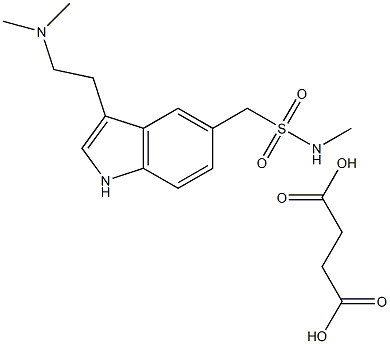
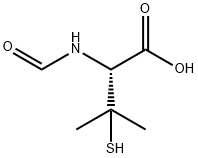
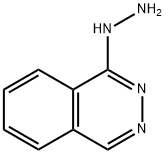
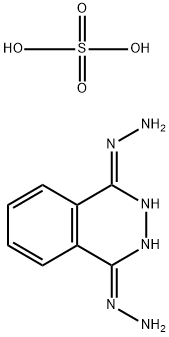
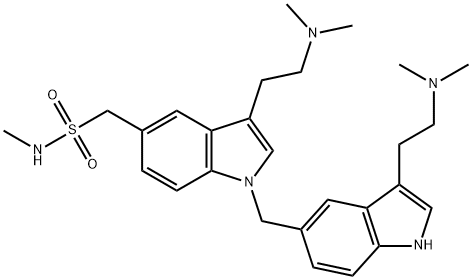
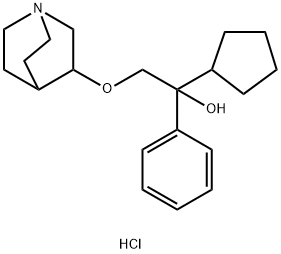
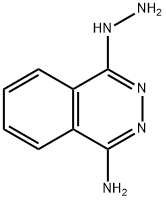

You may like
-
 302-01-2 98%View Details
302-01-2 98%View Details
302-01-2 -
 HYDRAZINE 99%View Details
HYDRAZINE 99%View Details
302-01-2 -
 Hydrazine Hydrate Compound CAS 302-01-2View Details
Hydrazine Hydrate Compound CAS 302-01-2View Details
302-01-2 -
 Hydrazine solution CAS 302-01-2View Details
Hydrazine solution CAS 302-01-2View Details
302-01-2 -
 Hydrazine solution CAS 302-01-2View Details
Hydrazine solution CAS 302-01-2View Details
302-01-2 -
 Hydrazine solution CAS 302-01-2View Details
Hydrazine solution CAS 302-01-2View Details
302-01-2 -
 Hydrazine solution CAS 302-01-2View Details
Hydrazine solution CAS 302-01-2View Details
302-01-2 -
 20677-73-0 (2,2-diethoxyethyl)methylamine 98%View Details
20677-73-0 (2,2-diethoxyethyl)methylamine 98%View Details
20677-73-0
